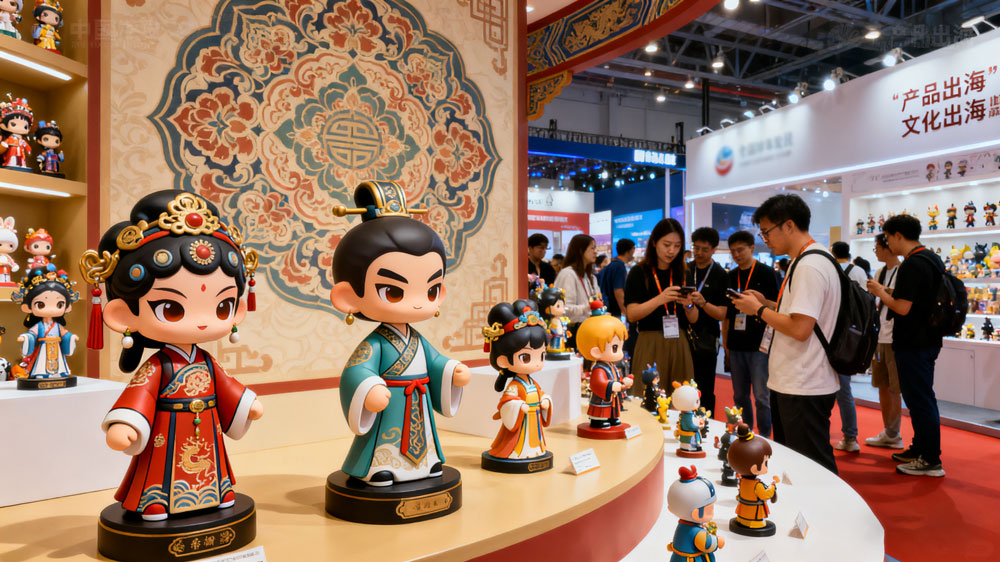In a dynamic shift within the global toy industry, Chinese Guofeng toys are evolving from niche collectibles into a significant cultural export, captivating international audiences with their unique blend of traditional heritage and contemporary design.
The global toy market is witnessing a remarkable trend: Chinese Guofeng toys, which integrate traditional cultural elements with modern aesthetics, are gaining unprecedented popularity overseas. This movement represents a shift from mere "product export" to genuine "cultural export," where toys act as bridges for cultural exchange.

Leading companies like Pop Mart, 52TOYS, and HEYONE are at the forefront, demonstrating that the appeal lies in a sophisticated "cultural translation" strategy that resonates with global consumers.
01 Three Pillars of Guofeng’s Global Appeal
The success of Guofeng toys internationally rests on three key strategies, transforming ancient Chinese culture into globally desirable products.
First, deep cultural mining with modern design. Brands are moving beyond superficial symbols like dragons or pandas. Instead, they are delving into profound cultural heritage, reinterpreting it for today's global youth.
Pop Mart, for instance, has seen its overseas revenue contribute to over 40% of its total, with markets in Europe and America growing by over 200% for three consecutive years. Its collaboration with the Palace Museum on a A Thousand Li of Rivers and Mountains series successfully transformed classical landscape painting into contemporary collectibles.
Similarly, the "Tang Niu" character, inspired by a Tang Dynasty figurine from the Shaanxi History Museum, has become a cultural icon in Xi'an, appearing on public transportation cards and daily necessities.
Second, innovative IP incubation and cross-border collaboration. The industry has matured from simple manufacturing to systematic IP cultivation. These toys are no longer just playthings; they are "vehicles of emotional value and cultural innovation."
Brands are creating rich storylines around their IPs. HEYONE’s character "MIMI," for instance, featured in a Southeast Asia-exclusive blind box series, embodies classical Eastern aesthetics, making cultural elements collectible and relatable. Cross-border collaborations, like those between toy brands and museums or even sports events, further enhance IP vitality and reach.
Third, glocalized marketing and cultural immersion. A key insight driving success is that cultural export isn't about imposing Chinese culture. It's about adaptation and finding common ground.
Pop Mart's approach exemplifies this "global framework + local plugins" model. This might involve collaborating with local illustrators in Singapore to create Peranakan culture-limited editions or incorporating Shakespearean elements in its London flagship store. This strategy ensures resonance with local audiences while maintaining the IP's core identity.
02 From Product to Culture: The “Go Global” Strategy in Action
The transition from shipping boxes to sharing culture is a deliberate process powered by strategic market entry and immersive experiences.
Chinese companies are aggressively expanding their global footprint through direct investment in overseas retail and high-impact marketing events.
Pop Mart has opened 571 stores globally across 18 countries, including locations in the UK and Indonesia. HEYONE chose Bangkok's iconic ICONSIAM mall for a large-scale, month-long pop-up event in September 2025, creating a phenomenon that sold out multiple product lines and dominated local social media trends.
These pop-up events are particularly effective. They are not just sales points but immersive cultural experiences that allow overseas consumers to engage with the brand's world, fostering a deeper emotional connection.
Furthermore, companies are leveraging the power of digital platforms. Brands like Dongguan Fuzhiyu Toy use TikTok and Instagram to build their IPs as "Z-generation cultural symbols," directly engaging with the global youth.
Some, like Fuzhiyu, even partner with overseas design students for co-creation projects, turning international youngsters into brand ambassadors and ensuring their products are culturally relevant from the outset.
The future of Guofeng toy lies in deeper cultural integration and technological innovation. As brands continue to refine their strategies, the focus will shift towards creating even more immersive experiences, potentially leveraging AR and VR to allow global consumers to interact with the cultural stories behind the toys. This ongoing evolution promises to solidify the position of Chinese cultural toys on the world stage.
Post time: Sep-27-2025



